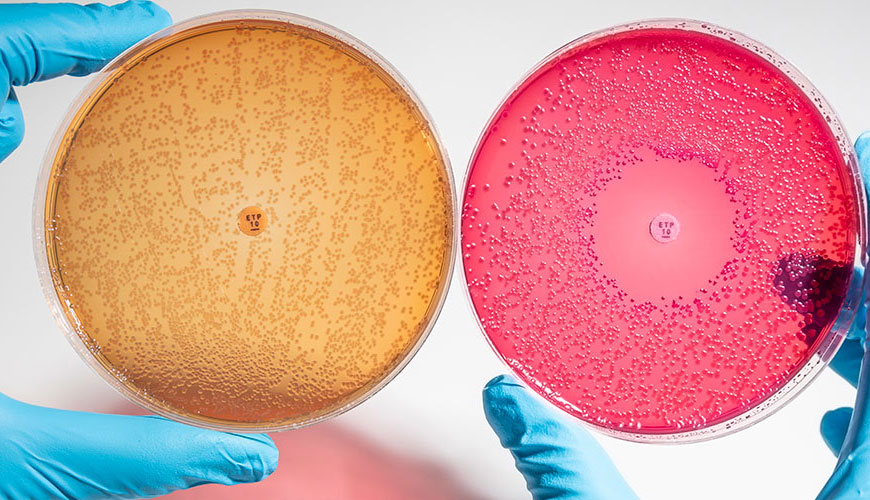

The ASTM E2180 test is primarily designed to evaluate (quantitatively) the antimicrobial efficacy of agents incorporated or bonded to flat (two-dimensional) hydrophobic or polymeric surfaces. The method primarily focuses on assessing antibacterial activity; however, other microorganisms such as yeast and fungal conidia can be tested using this method.

The vehicle for the inoculum is an agar slurry that reduces the surface tension of the saline inoculum carrier and allows for the formation of a "pseudo-biofilm" that ensures more even contact of the test surface and the inoculum.
This method can be used to evaluate the efficacy of deposited/bound antimicrobials on hydrophobic materials such as plastics, epoxy resins, and other hard surfaces.
The aqueous-based bacterial inoculum remains in close, uniform contact with the treated material in a "pseudo-biofilm" state. Percent reduction is determined in surviving populations of challenge bacterial cells 24 hours away versus those recovered from an untreated control.
The hydrophobic substrate can be repeatedly tested over time to assess lasting antimicrobial activity.
This test method facilitates testing of hydrophobic surfaces using cells retained in an agar slurry matrix. This test method, as written, is not suitable for determining activity against biofilm cells that are both genetically and metabolically different from the planktonic cells used in this test.
This method can confirm the presence of antimicrobial activity in plastics or hydrophobic surfaces and allows for the determination of quantitative differences in antimicrobial activity between untreated plastics or polymers and those with water-soluble low water-soluble antimicrobial agents. Comparisons can also be made between the number of survivors with preservative treatment and those controlling hydrophobic surfaces.
The procedure also allows determining the "shelf life" or long-term durability of an antimicrobial treatment, which can be obtained by testing both unwashed and washed samples over a period of time.
For these processes, it is necessary to have knowledge about microbiological techniques. Values stated in SI units should be accepted as standard. No other units of measurement are included in this standard.
This standard is not meant to address all safety concerns, if any, associated with its use. It is the responsibility of the user of this standard to determine appropriate safety, health and environmental practices and to determine the applicability of regulatory restrictions prior to use.
Our organization also provides testing services within the scope of ASTM E2180 Standard Test Method for Determining the Activity of Anonymous Antimicrobial Agents in Polymeric or Hydrophobic Materials, within the framework of laboratory testing services.
To get an appointment, to get more detailed information or to request an evaluation, you can ask us to fill in our form and reach you.